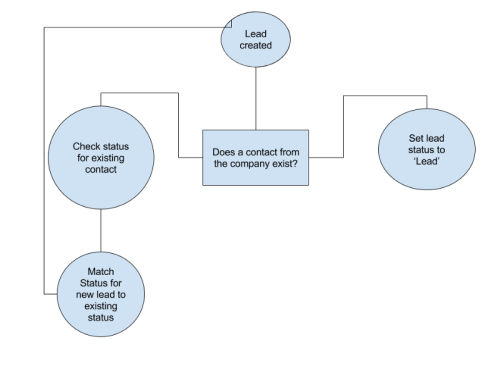First written early in 2017, re-discovered in drafts.

Process: Facebook Advertising is a wonderful rabbit hole. I’ve done Facebook Ads in the past. It’s easy to get carried away by all the targeting options like, custom audiences, interests, demographics, placements, bid types, ad types etc.
But it’s important to focus within your resources, both people and budgets. Sure you can make gorgeous canvas ads to create an immersive experience with embedded videos and what not. But is the complexity and overhead worth it? Sure you can create Facebook Ad funnels with a blog post for the first group, use the Facebook Pixel to re-target those who read the blog with a gated offer and then re-target those with a free trial or demo. But it’s a factor of much money are you willing to spend, how often do you want to actively monitor campaigns, ad sets and ads and tweak and keep an eye on things. Yes you can setup automated rules within Power Editor now to take some of that headache off you but does if you are only spending $500 per campaign, with 5 campaigns and 2 ad-sets and 4 creatives, is it not easier to simplify the process?
Experimentation and process is an important part of learning, but only after you’ve reached the local maximum in your current setup. In my case, doing Adwords, Adroll, GDN, LinkedIn, Twitter, Facebook meant that my rather limited ad spend was getting chopped up across these channels and not really getting its full potential. For any meaningful learning to happen, you need to have enough data points to look at.
Spending $100 on Adroll and reaching 50 people but not seeing early results didn’t mean it wouldn’t work. It just mean I hadn’t figured out what would work.
Learning in most experiments is a function of sample size. For example, if you only get 100 people to your landing page that you have 2 variations of, and variation B is shown to 50 people and 5 of them signup for your product, does that mean the same will hold true when 5,0000 people land on that page? Most likely not. And how long does it to get 5,0000 eye balls on a page? Months? Is it worth testing something over a period of 8 months when you only expect to see a 2% increase in signups? Does it have a significant impact on your business? I won’t get into the math of the statistics behind it, but something to think about.
The same held true for my ad spend. If I am spreading my budget across every available channel, with LinkedIn being the most expensive & only getting a handful of people to click on the ads. Is that a learning? Or just a waste? On top of that, within each ad network, there’s at-least a dozen things you can change like ad creative to attribution windows to bids to targeting.
Complexity.
Learning comes from structured process and smart decisions to focus vs trying 20 different things but not really trying them well.
4 years ago, I wouldn’t have said process. I probably would have been that person who spent $100 on each available ad network including Snapchat, partially out of curiosity without asking if my audience uses Snapchat.
Process helps you answer questions like what you are trying to do and how will you do it? How will you document results so 6 months from now, you can reference them instead of repeating the same mistakes?
How I’ve started doing it: writing everything down in a Google Doc.
Before I start a new advertising campaign, I take sometime to create a document outlining my assumptions, strategy (driving new audience or trying to reach an existing one) which defines the audience (interests + behaviour + web) & ad creatives.
After the campaign is over (I structure them by months for ease of budgeting) I export the results into excel and see if there’s any correlation or patterns that I can repeat.
An example is that in March, I noticed that most of the conversions from Facebook Ads came via Desktop and Apple Devices:

So in the next campaign , I created Ad Groups targeted by device:
- Desktop
- iPhone
- All Devices
With the same audiences across ad groups to test the assumption. Since my previous campaign strategy & results are documented, I can always go back and see what I did and compare.
December 2017 update: The device targeting didn’t result in a significant change in results.
Want to know more about Facebook Advertising for B2B? Signup here to get notified if/when I finally finish writing my essay.
Agencies: It was after dinner when I got the call from alawyer from the west coast specializing in real estate & family law. Looking to dive into marketing to drive new business, a mutual friend had introduced us earlier.
He shared his experience with a local agency that promised to increase his search rankings but after 6–8 months, without any solid results, he decided to part ways.
With another agency proposal in hand, he was looking for an extra pair of eyes for a sanity check.
As I looked the proposal he sent over from a full service agency, it sounded needlessly complex for a small law firm. The agency had line items for content calendar, social media marketing, Adwords (setup and ongoing) and even press releases.
My first instinct was to look at Google Analytics and the % traffic via social media & what % of visits came through the blog and general content spot check. The numbers of referrals from social in GA didn’t justify the $$ on social media setup & and on-going $ for social media marketing (posting?). All social channels combined were bringing in less then 2% of the traffic, which could have been bots since the bounce rate was high. The blog; a mix of client stories for the most part, did not have a strong organic reach.
We didn’t get into each line item, but I told him that in my view, the proposal he got was trying to do too much. It was a local law firm that only worked with local clients, folks don’t tend to follow lawyers on Twitter, unless they have a super witty social team (Wendys anyone).
My two cents were to stop putting up client stories on the blog they belong as testimonials on the site, instead focus on search keywords and intent and break it into two buckets:
- Brand Affinity: focus on keywords that are informational — How do find a good real estate lawyer, example of house transfer contract etc, what happens during divorce or separate etc. Search queries where someone isn’t looking to hire someone right away but looking for more information.
- Buying Intent: Good lawyers near me, real estate lawyer <city name> etc. This is also a direct conversion (have Ad extensions setup) but also if you did the brand affinity strategy, your customer is already familiar with your name so they’re more likely to click/convert on your ad.
The second suggestion I had was to perhaps hold some offline workshops or free office hours and put up some subway ads in the city. Press releases and scheduling posts in buffer would hardly move the needle for him.












